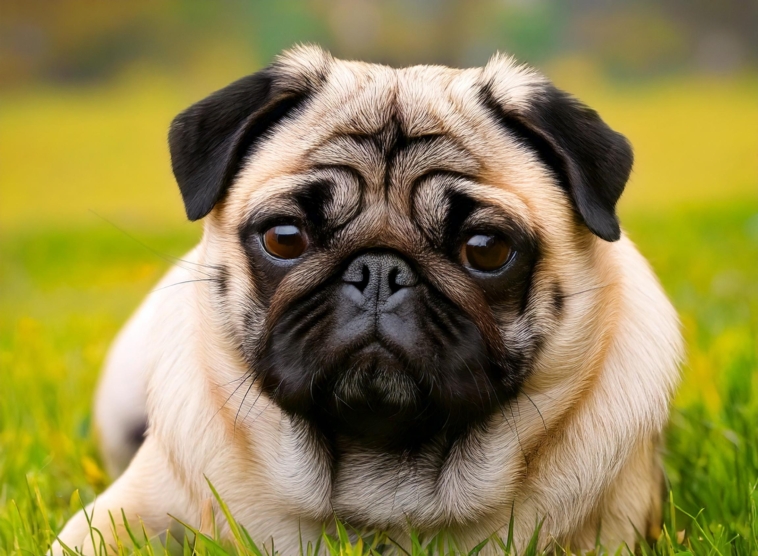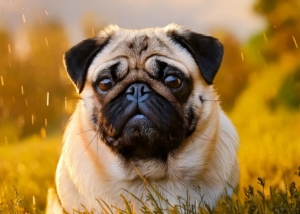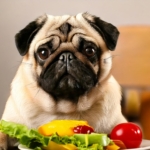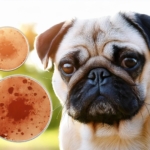How to Keep Your Pug Healthy (Without Losing Your Mind)
Taking care of a pug is sort of like taking care of a extremely cuddly, flat-faced toddler who believes that everything is edible and has a tantrum if you’re late for walk time by three minutes.
Yes, pugs are cute. Yes, they’re soft little bundles of affection. But no, they are not low-maintenance. Their adorable little faces come with a long list of health idiosyncrasies you have to get in front of—or else.
Special Pug Problems (That Come with Extra Snorts)
Pugs are a brachycephalic breed, aka “squished face with breathing problems.” That squish might capture hearts, but it captures them frequent flyer miles to the doctor’s office as well.
Look for these:
- Breathing Difficulties: If your pug is like Darth Vader snores in a tunnel, then maybe it is time for an appointment.
- Weight Woes: A chubby pug is adorable until it’s waddling into joint disease and respiratory distress. Keep snacks under control.
- Eye Drama: Their little eyes protrude like small marbles, so even the slightest gust of wind can irritate or harm them.
- Joint Sass: Their wee legs weren’t designed to jump off sofas like action stars. Supplements can assist, and so can you—by picking them up like royalty.
- Pro tip: Grooming, exercise, and food do a world of good. Yes, pug folds too deserve more care than your WiFi router.
Unique Health Quirks of the Distinguished Pug
Because why be normal when you can have a breed that comes with a user manual?
- Respiratory Problems: Their airway is literally shaped like a flexible straw. Snoring, wheezing, or Oscar-worthy sighing = warning signs.
- Eye Trouble: Their “big ol’ anime eyes” are magnets for injuries. If they’re red, cloudy, or teary call the vet.
- Skin Folds: All those cute wrinkles? They are stealthy dirt holders. Get rid of ’em unless you desire the pungent odor of stinky socks trailing you behind.
- Joint & Bone Problems: These heavy weights are likely to develop hip dysplasia and knees popping out like characters from a toon
A Balanced Diet: Because Pizza Crust is Not a Food Group
Feeding a pug is more “deliberate meal preparation” and less “just throw them a bite.” Their body may be tiny, but their stomach is that of a Great Dane.
Most Important Nutrients:
- Protein: To make muscles strong, so they can bend when chasing squirrels.
- Healthy Fats: Great for the skin, coat, and energy (but don’t give them too much, or they’ll be a sausage on legs).
- Carbs: For fuel, but not the type that puts them into a food coma.
- Vitamins & Minerals: A multivitamin smoothie—but doggy-style.
- Fiber: For silky. you know. potty stops.
Vet tip: Your pug isn’t a buffet patron. Keep portions in check, watch for allergies, and don’t worry about saying “no” to those pleading eyes
Exercise: Because Couch Potatoes Get Squishier
Your pug may enjoy lounging like a Victorian lord, but regular exercise keeps their small ticker ticking.
- Cardio: Walks are the key. But short ones. In inclement weather. With plenty of sniff stops.
- Muscle Tone: Not to flex in Instagram selfies, but to keep their chunky little bodies together.
- Brain Games: Puzzle toys, training exercises, and hide-and-seek (with treats, naturally) to avoid boredom tantrums.
Weight Management: Don’t Let Them Become a Roll with Legs
A fit pug is a happy pug. An heavy pug? That’s a vet bill waiting to happen.
Pug Weight Survival Kit:
- Stick with Dog Food: Human food is for human consumption. Your pug doesn’t require fries, Karen.
- Daily Walks: Even if they give you the “I’d rather nap” look, walk them.
- No Table Scraps: Even if they appear betrayed, hold firm.
- Vet Visits: Because weighing them on your bathroom scale while in your arms isn’t always the most reliable.
- Warning: Don’t go off the reservation with crash diets or exercise regimens. Always consult the vet first.
Hydration: A Well-Watered Pug Is a Happy Pug
Dehydration? Not on my watch, Lucifer.
- Fresh Water Always: Restock it daily—unless your pug thinks mud puddle water is nice.
- Multiple Bowls: Water stations around the house. Technically a hydration spa.
- Keep an Eye On Intake: Not enough water? Time to call the veterinarian.
- Cool Water: Particularly for summer. Nobody likes a heat-stroked potato.
- Pet Fountain: Because running water = fancy and entertaining.
Vet Visits & Vaccinations: For Pug Peace of Mind
Nobody enjoys a visit to the doctor, and neither do pugs. But frequent trips to the vet are how you prevent dramatic health surprises.
Look for:
- Strange behavior (stranger than normal).
- Red gum, stinky breath, or T-rex breath.
- Weight fluctuations and coat health.
Vaccines You Don’t Want to Skip:
- Distemper: Creepy stuff. Extremely contagious.
- Parvovirus: Also frightening. Fatal, too.
- Stick to the schedule. Vaccines save lives and cut down on drama.
Pug Dental Care: Because Bad Breath Shouldn’t Be a Weapon
- Dental care isn’t all flash. Pugs are susceptible to dental catastrophes if you don’t pay attention to their teeth.
- Brush Up: Use dog toothpaste. Not your minty human kind (unless you want a pug with a tummy ache).
- Dry Food: Crunchy food = less plaque.
- Check Frequently: Red gums or bad breath = time for vet.
Grooming & Maintenance: Keep That Pug Glowing
Brushing, bathing, and wrinkle-cleaning—your pug is basically a high-maintenance influencer.
- Brushing: Twice weekly with a soft brush. Bonus: less fur on your couch.
- Bathing: Every 3–4 weeks. Rinse well or they’ll be itchy drama queens.
- Ears: Clean weekly with a vet-approved ear cleaner and a cotton ball.
- Nails: Clip every 2–3 weeks. Bonus points if no one cries.
- Teeth: Daily brushing is best. At least try for three times a week.
Behavioral Shenanigans (And How to Handle Them Like a Pro)
- Pugs are 50% dog, 50% personality. That personality sometimes requires. direction.
- Aggression: Typically results from bad socialization. Correct it with patient, consistent training—not screaming.
- Hyperactivity: Zoomies are okay. Spinning like a blender at 3 a.m. is not.
Training Tips:
- Positive Reinforcement: Praise and rewards. Not bribes—inspiration.
- Consistency: Train every day. Even if it’s only 5 minutes.
- Socialization: Allow them to meet dogs, people, and that strange vacuum they fear.
Final Word: The Secret to a Healthy, Happy Pug? You.
Having a pug is half caretaker, half comedian, half personal assistant. But if you get the fundamentals right, your squishy friend will flourish.
- Regular vet check-ups: Don’t miss them, even if your pug shoots you the side-eye.
- Personalized nutrition: Not all kibble is made equal.
- Regular exercise: Daily walkies, even if it’s just around the block.
- Grooming & hygiene: Don’t neglect the folds!
- Brain food: Keep ’em amused or face the aftermath (munching on shoes, anyone?).
Happy pug = healthy pug = snorting, joyful ball of fluff who believes you hung the moon.





